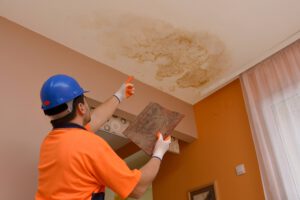What to Do When Your Home is Flooded
One of the most common causes of water damage in homes is leaking pipes. If not repaired quickly, a leaking pipe can lead to extensive damage. Fortunately, most leaks can be easily found and repaired with basic tools and handyman skills. Pipe leaks can cause water damage ranging from small, localized stains to large areas of softwood. These leaks can also damage the caulking around pipes and other plumbing.
Other common causes of water damage in the home include dishwasher overflow and broken dishwasher hoses. Similarly, broken pipes and toilets can result in significant water damage. In addition, flood water and groundwater seepage can also result in damage to a home. A leaking pipe can result in thousands of gallons of water a day, so it’s vital to repair this problem as soon as possible.
While flood damage is a serious concern, homeowners should work to minimize the impact of water damage. Often, homeowners’ insurance coverage will cover some of the costs associated with flooding. It’s important to contact your insurance agent as soon as possible following a flood. If the damage is caused by a pipe leak, it’s also important to contact your insurer.
In addition to external causes, water damage can be caused by a clogged main sewer line. Additionally, many household items can develop leaks, including refrigerators. For example, a leaky refrigerator can cause extensive water damage if it’s not maintained properly. In addition to water damage from a broken pipe, a leaking dishwasher can cause additional damage.
A leaking pipe is one of the most common sources of water damage, which is not always readily apparent. A burst pipe can result in substantial damage and can affect your property value. In most cases, leaking pipes are caused by clogged plumbing systems. Increasing pressure inside the pipes increases the risk of rupture. Knowing where the main shutoff valve is in case of a plumbing emergency is essential.
When your home or business is flooded by water, it is important to determine the type of water and the type of damage. Water can affect many areas of your property, including the walls and wiring. There are several classifications for water damage, and the type of water you encounter will greatly impact the type of restoration you need to complete. To determine the best course of action, consult your local fire department, water bureau, or environmental protection agency for more information.
The first category is clean water damage. This kind of damage is relatively easy to repair and poses no health risks. It can occur if a sink or bathtub overflows. It is important to keep in mind that clean water can contain bacteria and mold, and it may degrade materials. It can also pose an electrical hazard in some areas. Therefore, it is important to contact a professional as soon as possible to prevent any further damage.
Water damage can range from a simple appliance overflow to an extensive disaster. Either way, the effects can be devastating to your property and belongings. If you fail to take action quickly, your home or business could be completely ruined. In some cases, it may even require you to evacuate your home.
If you need to repair your home or business, the most common type of water damage is Class 1. This kind of damage is clean and can be remedied quickly, while Class 2 is much more expensive to repair.
Untreated water damage can lead to serious health concerns, including the development of mold, fungal spores, and bacterial growth. These conditions can have disastrous effects and must be addressed quickly. As early as one day after exposure to water, mold can begin to grow and cause a range of health issues. It can cause respiratory problems, allergic reactions, and reproductive problems and can be especially dangerous to people with compromised immune systems.
While the causes of these problems are not completely understood, it is known that exposure to flood water is associated with an increased risk of respiratory illness and asthma. The microbial volatile organic compounds that mold produces are known to irritate mucous membranes, and an epidemiologic study showed that living in a moist environment increases the risk of allergic rhinitis. However, it is important to note that not every individual exposed to water damage is at risk of developing any of these ailments.
